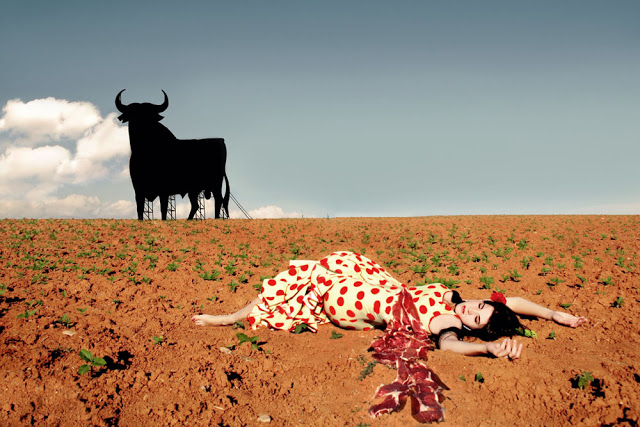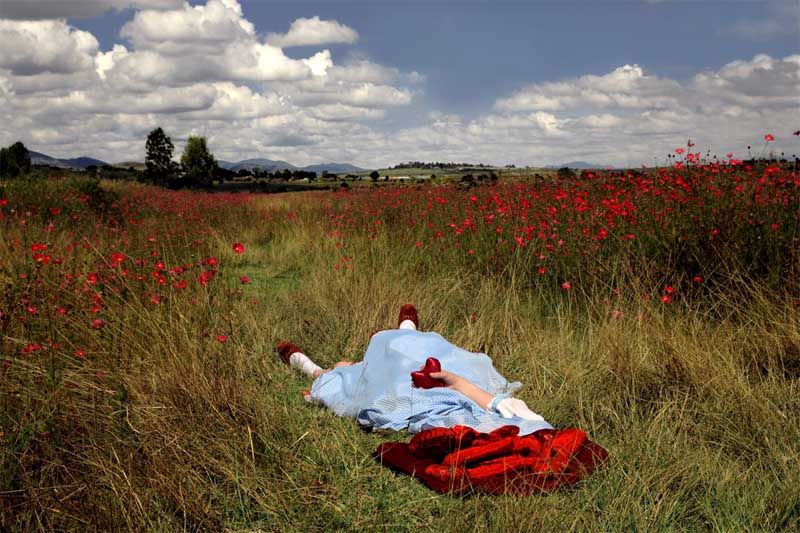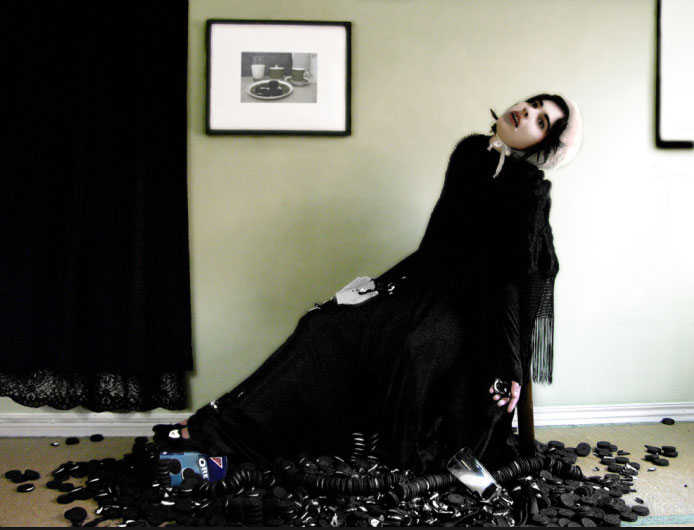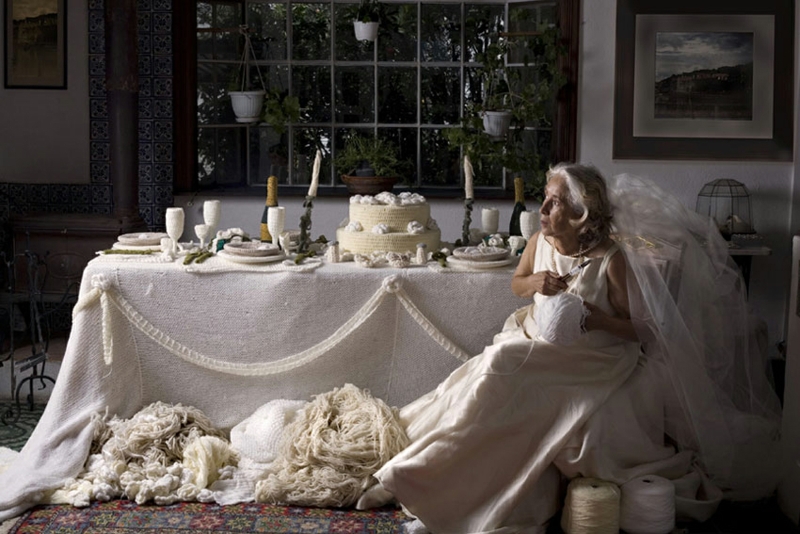La increíble Daniela Edburg entre la realidad y la ficción – Reality or Fiction? #Mexico #Art
For an english version of this article, please scroll down
Daniela Edburg entre la realidad y la ficción
Proof, la más reciente colección de Daniela Edburg exhibida en la galería Enrique Guerrero en la Ciudad de México, demuestra que esta artista mexicana no conoce fronteras cuando se trata de borrar la línea entre la realidad y la ficción. En una entrevista exclusiva, Edburg nos da toda la prueba que necesitamos para sacar nuestras propias conclusiones.

-En tu obra recurres a los paisajes hermosos, ¿creciste en el campo?
-Crecí en un pueblo chiquito, muy cerca del campo, en la infancia nunca lo aprecié, pero más grande, cuando viví un tiempo en NY, desarrollé una añoranza bien intensa por mirar el horizonte. Esto se convirtió en mi sueño recurrente, el campo, explanadas, grandes espacios abiertos.
-Has participado varias veces en exposiciones en México y en el extranjero, ¿cómo te ha recibido el espectador fuera de tu país?
-Me gusta presentar mi trabajo en otros países. Viajar, trabajar en otro escenario, horario, idioma, siempre es una experiencia enriquecedora. Me he sentido muy bien recibida, tanto yo como mi trabajo.
-¿Qué opinas de las ferias de arte?
– Las ferias son un ambiente ultra-saturado para presentar una obra; son un ambiente perfecto para hacer un sondeo de lo que está pasando en el mercado del arte, pero no el lugar idóneo para conocer bien el trabajo de un artista. Me gustan las ferias porque despiertan interés. De cada participación en una feria noto que mucha gente después se pasa por mi página, explora más a fondo y me deja un comentario, eso es buenísimo.
-Tu exposición Proof, en la galería Enrique Guerrero mostró retratos, naturalezas muertas y algunas escenas en paisaje, así como la presencia de elementos tejidos, ¿cómo unes los puntos de estos elementos?
-Me interesa el carácter artificial que tienen estos objetos hechos a mano y que representan cosas reales. La exposición se llama PROOF y trata sobre nuestra idea de lo que es real, lo que es un rastro y lo que es una evidencia, sobre nuestro afán por darle sentido a las cosas y sobre el absurdo.
-Una constante en tu obra es la aparición de mujeres sometidas y después consumidas por algún tipo de obsesión, dónde, pero desde una estética mas relacionada con el optimismo que con la tragedia, ¿qué pasa con estas mujeres?
-Siempre me han interesado los personajes obsesivos. Me interesa el punto en que la energía se vuelve autodestructiva y va en contra de lo racional. Las situaciones extremas dejan ver claramente cuál es la naturaleza humana y nos damos cuenta de lo fácil que es cruzar los límites, perder el control.
-Esto es aparente en la serie Drop Dead Gorgeous…
-En Drop dead gorgeous los escenarios eran entornos cotidianos donde los productos de consumo comunes y corrientes se tornan en amenazas mortales, pero más adelante seguí trabajando el concepto en algunas de las fotos de las series Killing Time y Knit, solo que en estos trabajos es la creación misma o la fuerza creativa la que se vuelve para destruirnos, como el Dr. Frankenstein y su monstruo.
-Como artista, ¿cuál ha sido tu mayor reto?
-Encontrar una manera fluida de producir, viajar y promover mi trabajo al mismo tiempo.
–¿De qué forma te han apoyado las instituciones?
-He gozado becas de FONCA y CONACULTA a nivel estatal y nacional. Me siento afortunada de haber participado del proyecto de jóvenes creadores, no solo por el apoyo económico sino por los encuentros que son una maravilla. Compartir y discutir los proyectos, expresar las dudas. Ahora me estoy preparando para hacer una residencia en Canadá, a través del FONCA nuevamente. También he recibido en algunas ocasiones el apoyo de Relaciones Exteriores para viajar y para transportar mi obra a otros países.
-¿Qué consejo le darías aquellos que comienzan su aventura por el arte?
-Considerar las limitaciones como una oportunidad de encontrar un estilo propio y también les diría que es importante no tener prisa.
Daniela Edburg (1975) es una artista mexicana nacida en Houston. Edburg creció en San Miguel de Allende y estudió en la Academia San Carlos en la Ciudad de México, su obra se ha exhibido en ciudades como Los Angeles, Nueva York, Moscú, Barcelona y Montreal. Dentro de sus exposiciones individuales destacan “Drop Dead Gorgeous” Kunsthaus Santa Fé (San Miguel de Allende), “Nimbus” Galería Arte Joven (México DF), “Eat me” Kunsthaus (Miami), “As seen on TV” La Panadería (México DF), “Bittersweet” Kunsthaus (Miami), “Here by accident” Aldaba Arte (México DF), “Let’s play house” Centro Cultural El nigromante, (San Miguel de Allende).
Entrevista por Naomi Palovits (HelloDF) para la revista Negocios
Daniela Edburg, Reality or Fiction?
Proof, Daniela Edburg’s most recent collection exhibited by the Enrique Guerrero gallery in Mexico City, goes to show that this Mexican artist knows no boundaries when it comes to blurring the line between reality and fiction. In an exclusive interview with Negocios, Edburg gives us all the proof we need to draw our own conclusions.
Daniela Edburg was born in Houston in 1975, but grew up in San Miguel de Allende, Guanajuato. She currently lives and works in Mexico City. Proof, her most recent collection shown at the Enrique Guerrero gallery in Mexico City, sets the imagination into overdrive. Edburg initiates a dialogue between an aesthetic of intricate detail –so excessive it sometimes overpowers the protagonist– and horror that makes us want to take to our heels and move on to the next piece, only to be captivated once again by the same mixture of raw emotion and terror.
A graduate of the San Carlos Academy in Mexico City, Edburg’s work has perturbed gallery-goers in cities as far-flung as Los Angeles, New York, Moscow and Barcelona. Her solo exhibitions include Drop Dead Gorgeous, Nimbus, Eat me, As Seen on TV, Bittersweet, Here by Accident and Let’s Play House.
—Do the beautiful landscapes you depict in your work have any connection to your childhood?
I grew up in a little town not far from the countryside. As a child, I never appreciated it but when I was older, when I was living in New York, I developed a yearning, a need to stare into the horizon. It became a recurring dream: the country, esplanades and wide, open spaces.
—How has your work been received in other countries?
I like showing my work in other countries. Traveling, working in a different environment, time zone and language is always an enriching experience. I feel I have been very well received and so has my work.
—What is your opinion of art fairs?
Art fairs are great because they wake people’s interest. After I take part in a fair, I notice more people visit my website. Most of them want to know more about my work and will leave me a comment, which is wonderful.
If you are looking for exposure, fairs are an ultra-saturated environment, perfect for giving you a feel for what is going on in the market but not always the best place to get a sense of the body of work of a given artist.
—Your most recent exhibition, Proof, is a collection of portraits, still lives and landscapes into which you have introduced knitted elements. How do you join the stitchwork?
What interests me is the artificial nature of these handmade objects that represent actual things. The exhibition is called Proof because it is about our perception of what is real, what a trace left behind is and what evidence is. It is about our need to imbue things with meaning and the absurd.
—Characters that have fallen prey to some kind of obsession are a recurring leitmotif in your work. You document this point of rupture but take an aesthetic approach that could be deemed more optimist than tragic. What is the deal with these characters?
I have always been fascinated by obsessive characters, more specifically by that point where their energy becomes self-destructive and defies logic. Extreme situations reveal the real essence of human nature and we come to realize how easy it is to lose control.
—That is clear from your Drop Dead Gorgeous series…
In Drop Dead Gorgeous the scenarios were commonplaces in which everyday consumer items came to represent mortal threats. But later on I explored the concept further in some of the photos from my Killing Time and Knit series, except in these pieces, it is the creation itself or the creative energy that returns to destroy us, like Dr. Frankenstein and his monster.
—As an artist, what has been your biggest challenge?
To find a seamless way of creating, traveling and promoting my work all at the same time.
—What advice would you give to budding artists setting out on their own adventure?
View limitations as a chance to discover your own style. I would also tell them that it is important not to rush things.
Interview by Naomi Palovits (HelloDF) for Negocios magazine








Comentarios: